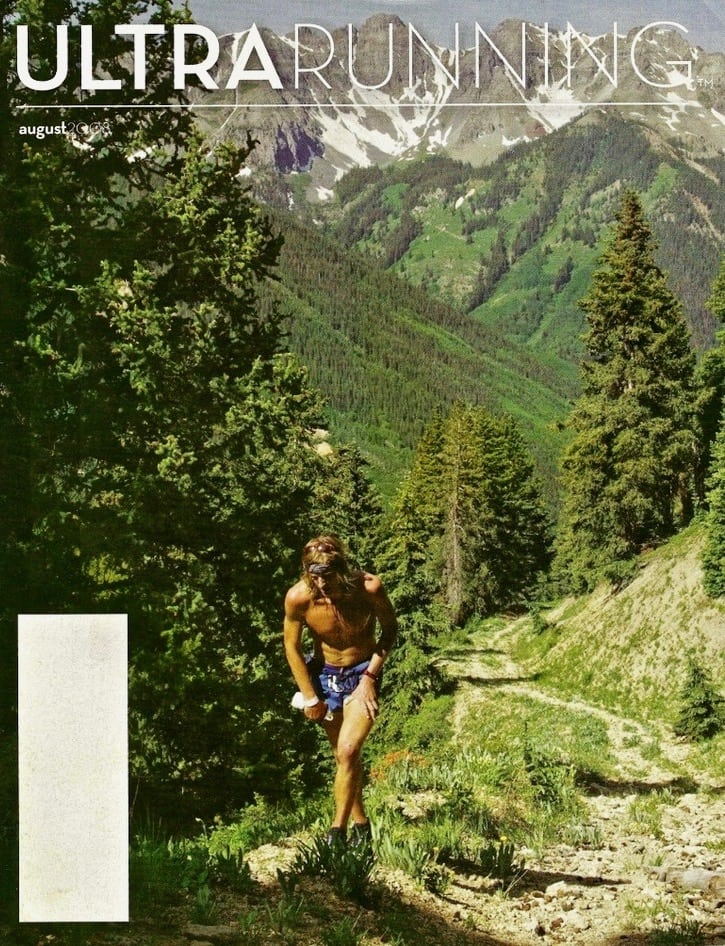 In July of 2008, 23-year-old New Mexican Kyle Skaggs won the Hardrock 100 in a time of 23:23, becoming the first runner in the storied history of the race to complete the loop through Colorado’s San Juan Mountains in under 24 hours. Along the way he bettered, by over three and a half hours, the clockwise course record held by Karl Meltzer. Ten-time Hardock finisher Scott Jaime, no stranger to the top five at Hardrock, finished in second place that year a full six hours after Skaggs. At the time, it was the most dominating trail-ultramarathon record in the world. It was also the last time Skaggs would run 100-mile race.
In July of 2008, 23-year-old New Mexican Kyle Skaggs won the Hardrock 100 in a time of 23:23, becoming the first runner in the storied history of the race to complete the loop through Colorado’s San Juan Mountains in under 24 hours. Along the way he bettered, by over three and a half hours, the clockwise course record held by Karl Meltzer. Ten-time Hardock finisher Scott Jaime, no stranger to the top five at Hardrock, finished in second place that year a full six hours after Skaggs. At the time, it was the most dominating trail-ultramarathon record in the world. It was also the last time Skaggs would run 100-mile race.
Speaking to him earlier this week, he said simply, “Hardrock is basically the only 100 miler I ever really wanted to run.”
This is the story of that once-in-a-lifetime run.
The Background
I first met Kyle Skaggs at the 2006 Wasatch Front 100 Mile where he and I were crewing and pacing for friends. As is often the case in such circumstances, we found ourselves in the back of a vehicle together, bounding our way out to one of Wasatch’s remote aid stations. Speaking with Kyle throughout that day, I was profoundly struck by his calm demeanor and wise countenance which belied his age. He was barely 21.
The next year, Kyle would return to Wasatch as a runner to complete his first 100 miler as a ‘test run’ for his planned trip to Hardrock sometime in the near future. In that race, he cruised to a win in a then course-record time and was poised for a strong build-up going into the 2008 Hardrock. As luck would have it, Kyle was drawn fourth on the waitlist that year, giving him all but a guarantee of entry into the race.
The Training
During the winter of 2007 and 2008, Kyle lived in Ashland, Oregon and worked at Hal Koerner’s new running store, Rogue Valley Runners. While there, he trained with the likes of Koerner, Ian Torrence, and Anton Krupicka, and early that spring he and Krupicka relocated to Krupicka’s adopted hometown of Colorado Springs, Colorado to train at altitude and fine tune a game plan for the big day.
As it turned out, Colorado Springs was not Skaggs’s cup of tea as he was more comfortable in smaller, more remote mountain towns so in early April he set out on his own to Silverton, a town where he had spent three previous summers working for the Mountain Studies Institute conducting scientific studies in some of the high-alpine lakes for which the region is known. While in Silverton, Skaggs just poured himself into his training,
“I didn’t really keep track of my mileage but if I wasn’t sleeping, eating, or working, I was running. By the time the race rolled around, I had covered every inch of the trail at least three times.”
In recalling his build-up to the race, Skaggs laughs, “To be honest, I can’t remember running with a single other person during that time. Training exclusively on my own fueled my confidence and got me ready.”
The Race
Skaggs insists that he had no plans to break the course record or run sub-24 hours when he departed Silverton on that cool July morning. In fact, his split card essentially mirrored Meltzer’s splits when he ran 27:07 a few years earlier. However, relatively early in the race, Skaggs seemed to be on to something special. So much so that when he arrived at the South Mineral Creek crossing a mere two miles into the race, he already had a three-minute lead. And he felt like he was barely moving.
Sticking to a simple game plan of hiking the uphills and bombing the downhills, Skaggs continued to expand his lead throughout the day. Subsisting almost exclusively on water and gels, Skaggs is amazed, to this day, that he made it around the course with no stomach issues. By the time he picked up his pacer Nate McDowell at Grouse Gulch, mile 53, they were more than an hour ahead of course-record pace and amazingly, by the time they reached Sherman, at mile 72, the sun was just setting. Nobody among the assembled spectators had seen that before as they rushed to set up the aid station a full two hours earlier than they had done so in previous years.
“To be honest, my only bad patch of the whole day was that last brutal climb up Little Giant. At that point, I knew I’d left it all out there but I had enough of a cushion I didn’t worry too much.” Cushion. Yeah, Kyle, a six-hour cushion!
Skaggs took a decidedly minimalist approach to the race, wearing a single pair of New Balance 790s that became delaminated after about 80 miles. He took his fluids out of a single handheld bottle which he filled in the lakes and creeks and then for carrying additional supplies he tied his Patagonia Houdini jacket around his waist and crammed gels into all the pockets. He never had to put the jacket on.
Speaking with Kyle earlier in the week, I was struck by the vivid memories he has of his extraordinary day while also carrying a significant degree of humility about the whole thing. I continue to believe that Kyle’s run at Hardrock a decade ago is one of the best performances in the history of our sport and yet I got the impression that he thinks of it now as just another long day on the trails. And to me that’s pretty darn cool!
Bottoms up!
AJW’s Beer of the Week
![]() This week’s Beer of the Week comes from what is, in my opinion, New Mexico’s best brewery, La Cumbre Brewing Company. Their Project Dank IPA is as bitter as it sounds as the brewery lists the ABU as “A LOT.” However, even so, it is a rich beer that is not boozy and is one of the few intensely hooped beers I’ve had that goes well with food.
This week’s Beer of the Week comes from what is, in my opinion, New Mexico’s best brewery, La Cumbre Brewing Company. Their Project Dank IPA is as bitter as it sounds as the brewery lists the ABU as “A LOT.” However, even so, it is a rich beer that is not boozy and is one of the few intensely hooped beers I’ve had that goes well with food.
Call for Comments (from Meghan)
- Did you see Kyle Skaggs race the 2008 Hardrock 100, either as a spectator, volunteer, or race participant? What was the experience like for you?
- If you were a fan of the sport in 2008, did you find Kyle’s performance to be transcendent for bettering the Hardrock course record by so much?
- What perspective does the idea of a person committing themselves ‘all in’ on a training project, like Kyle did with Hardrock that year? While not logistically possible for most people, does it offer some perspective for normal runners in more normal lifestyles, the idea of minimizing distractions to the extent that life allows for a focused experience?

